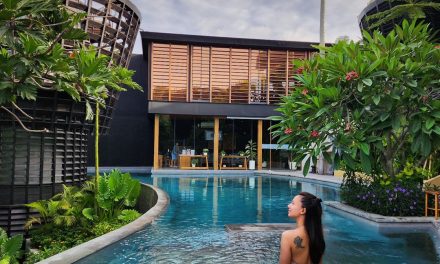When I first stepped into the lush, artistic haven of Ubud, Bali, I felt like I had entered a world that time forgot. With its vibrant culture, rich heritage, and beautiful landscapes, Ubud is more than just a tourist destination; it’s a living museum. If you’re itching to explore Ubud’s historical sites, I recommend embarking on an unforgettable walking tour. Let me take you on a journey through Ubud’s past, with personal anecdotes, unique insights, and practical advice to make your visit unforgettable.
The Essence of Ubud
Ubud is often recognized as the cultural heart of Bali. Nestled amidst emerald rice terraces and steeped in spirituality, this town has a way of connecting you to its history. The mere act of walking through the streets feels like taking a stroll through a historical tapestry, where every corner has a story to tell. As I embarked on my walking tour, I couldn’t help but feel excited to rediscover pieces of Ubud’s rich heritage.
Starting Point: Ubud Palace (Puri Saren Agung)
Your walking tour should start at the Ubud Palace, also known as Puri Saren Agung. As you step through the ornate gates, you’re greeted by intricate wooden carvings and serene gardens that whisper tales of the royal families that once inhabited this space. I remember standing here, watching local Balinese dancers practice for a performance. Their graceful movements and vibrant costumes transported me back in time, making history feel alive.
Tip:
Try to catch one of the evening dance performances at the palace. It’s not just a show; it’s a captivating glimpse into Balinese culture that you won’t want to miss!
The Sacred Saraswati Temple
Just a stone’s throw from Ubud Palace lies the enchanting Saraswati Temple. This hidden gem is dedicated to the goddess of knowledge, music, and art. As I wandered through the temple grounds, surrounded by lotus ponds and delicate statues, I couldn’t help but admire the tranquility that envelops this space.
Personal Anecdote:
I remember sitting on a bench near the lotus pond, eyeing the vibrant pink flowers while reflecting on my own creative pursuits. It was here that I penned the first few lines of my travel journal, inspired by the peace I found amidst such beauty.
Practical Advice:
Make sure to wear a sarong, as it’s a sign of respect in Balinese temples. If you don’t have one, don’t worry—many vendors around the temple rent them out for a small fee.
Exploring the Art Museums
Ubud is renowned for its art scene, and no walking tour would be complete without visiting a couple of its art museums. The Agung Rai Museum of Art (ARMA) is a fantastic start, showcasing both traditional and contemporary Balinese art. I remember being completely captivated by the bold strokes and vivid colors that dance across the canvases.
Tip:
Engage with the exhibitions and take the time to understand the stories behind the artwork. You might find yourself inspired to learn a bit of painting or balinese crafts!
The Monkey Forest
A short, scenic walk from the museums leads you directly to the Sacred Monkey Forest Sanctuary. Home to playful long-tailed macaques, the forest is a blend of nature and spirituality. As I explored the ancient temples hidden within, I chuckled at the cheeky monkeys stealing sunglasses and snacks from unsuspecting tourists. However, the atmosphere was far from chaotic; it was serene and mystical.
Relatable Scenario:
While I was attempting to take a selfie with a monkey, it nonchalantly jumped onto my shoulder, stealing my hat in the process! Amid the laughter, I realized this was one of those memorable moments that perfectly blended adventure with nature.
Reminder:
Be cautious with your belongings. The monkeys are clever and know exactly how to sniff out anything shiny or edible!
The Rice Terraces of Tegalalang
No tour of Ubud is complete without a stroll through the picturesque Tegalalang Rice Terraces. While it might require a bit of effort to get there, the views are undeniably worth it. Walking through the terraces, you can witness the incredible subak system (the traditional irrigation system) that has been in place for centuries.
Unique Insight:
It’s not just about the view; it’s about the people who cultivate this land and the historical techniques they employ. Speaking with local farmers while they work can provide fascinating insights into their lives and the agricultural heritage of the region.
Practical Tip:
If you’re feeling adventurous, consider a guided tour or even a short cooking class nearby to learn about how Balinese cuisine is intertwined with their agricultural practices.
Wrapping Up with a Local Warung Experience
As your walking tour comes to an end, stop by one of the local warungs (small family-owned restaurants) for an authentic meal. Savor a plate of Nasi Campur while soaking in the ambiance of this vibrant town. I can still vividly recall the warmth of the locals as they shared stories over food that nourished not just my body, but my soul.
Final Thoughts:
Ubud’s historical sites walking tour is a journey that nourishes both the heart and mind. Each site tells a story, and the people you meet add layers of depth to your understanding of this enchanting place. Embrace each moment, find joy in the little things, and don’t hesitate to ask locals for directions or recommendations—they’re often the best storytellers!
So, grab your walking shoes, pack your curiosity, and set off on an adventure through Ubud—a town where history comes alive at every corner. Happy exploring!






